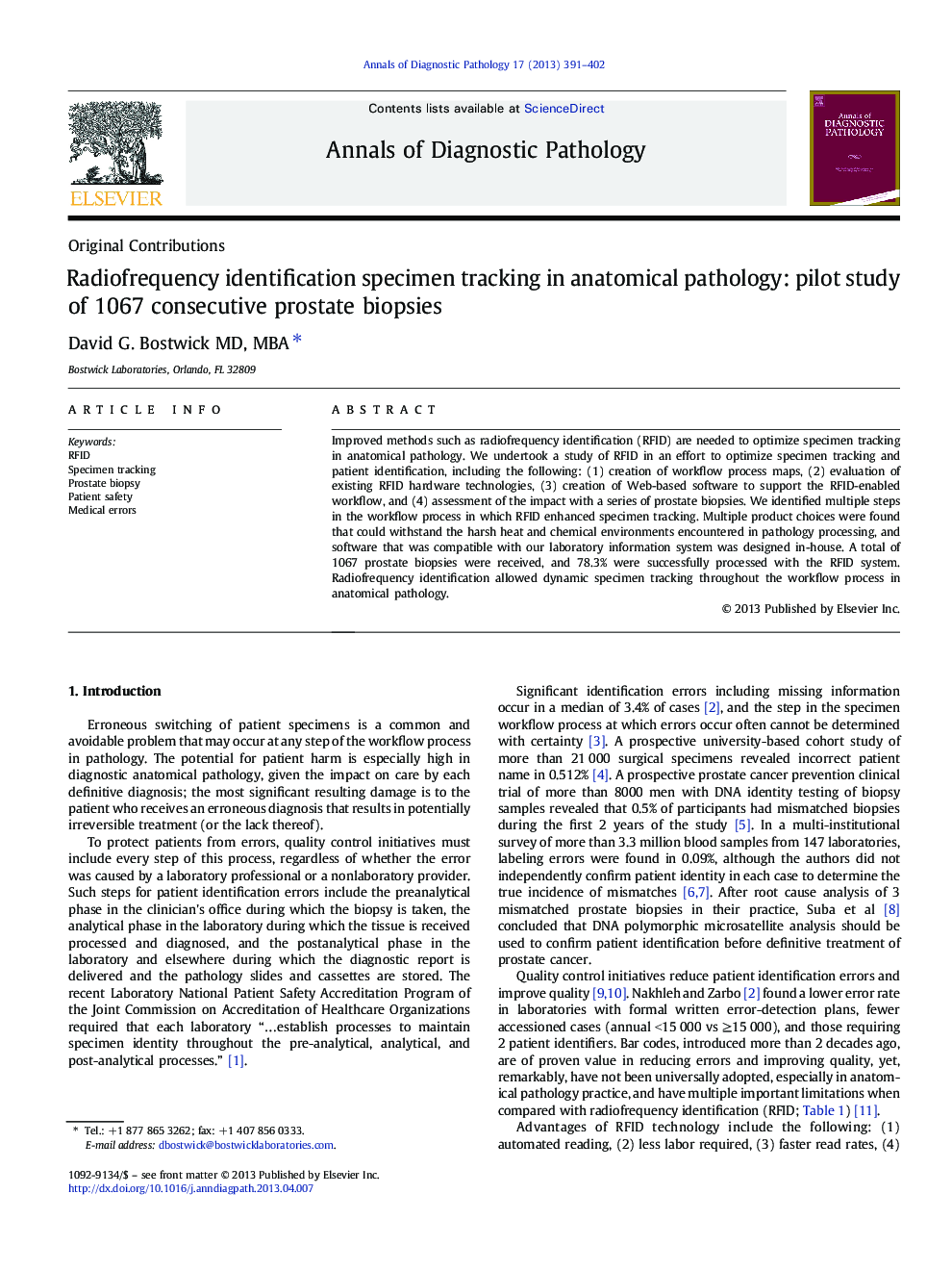| Article ID | Journal | Published Year | Pages | File Type |
|---|---|---|---|---|
| 4130055 | Annals of Diagnostic Pathology | 2013 | 12 Pages |
Improved methods such as radiofrequency identification (RFID) are needed to optimize specimen tracking in anatomical pathology. We undertook a study of RFID in an effort to optimize specimen tracking and patient identification, including the following: (1) creation of workflow process maps, (2) evaluation of existing RFID hardware technologies, (3) creation of Web-based software to support the RFID-enabled workflow, and (4) assessment of the impact with a series of prostate biopsies. We identified multiple steps in the workflow process in which RFID enhanced specimen tracking. Multiple product choices were found that could withstand the harsh heat and chemical environments encountered in pathology processing, and software that was compatible with our laboratory information system was designed in-house. A total of 1067 prostate biopsies were received, and 78.3% were successfully processed with the RFID system. Radiofrequency identification allowed dynamic specimen tracking throughout the workflow process in anatomical pathology.
